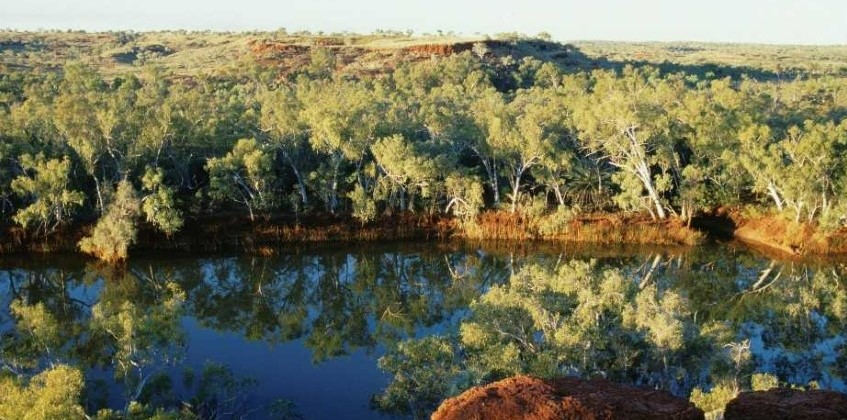A habitat is the physical environment in which an organism (such as plants and animals) or an ecological community (a group of species) is usually found. A species preferred or required habitat can change through time as some animals need to move to different habitats during different life stages.
Aquatic habitats occur at a range of scales - from a micro-habitat that could be located under a rock or log, to a macro-habitat such as a pool or riffle, through to, at the broadest scale, an entire river system, climatic region or vegetation type.
Typical waterway habitats include:
- substrates that form the watercourse bed and banks such as silt, sand, clay, stone, rock
- aquatic and riparian vegetation
- debris from vegetation such as leaf litter, twigs and logs
- areas of different water quality, depths and flow speeds such as pools, riffles, rocky rapids and backwaters.
Some plants and animals require floodplain habitats and some animals need to move along the length of a river system (see barriers to aquatic connectivity).
Because different species of plants and animals require different habitats, the presence and condition of aquatic habitat in a waterway has a major influence on the species and communities found there, and hence on the health of a waterway.
Tree branches or whole tree trunks which fall into a creek or river, described as large woody debris (LWD), contribute to aquatic habitat diversity. They create stable surfaces for macroinvertebrates, particularly in sandy waterways where the bed can be unstable. It also provides a surface for attachment of aquatic plants and algae, which absorb nutrients from the waterway and provide a source of food for macroinvertebrates.
Large woody debris also slows fast flowing water, creating sheltered areas for macroinvertebrates and fish, as well as protection from predators and the sun’s heat. LWD that emerges from the water provides roosting and preening sites for birds and can act as a ramp for turtles and water rats moving between the water and river banks.
Our monitoring and assessment program
The presence and condition of aquatic habitat is an important indicator of the health of a waterway. It is a major component of waterways assessments and includes methods described in Foreshore condition and assessment and the South West Index of River Condition.
Our Healthy Rivers program assesses the health of waterways across south-west Western Australia. Visit the Healthy Rivers website for more information about our south-west waterways, their plants and animals, river condition assessment sites, methods and results, and to see a range of collaborative projects to improve our rivers.
Publications
The following publications provide information and guidance about aquatic habitats in Western Australia:
- Water note 8 - Habitat of rivers and creeks
- Water note 9 - The value of large woody debris (snags)
- Water note 13 - The management and replacement of large woody debris in waterways
- Water note 21 - The importance of large woody debris in sandy bed streams
- Waterway ecology, River restoration manual
- Other chapters of the River restoration manual.



